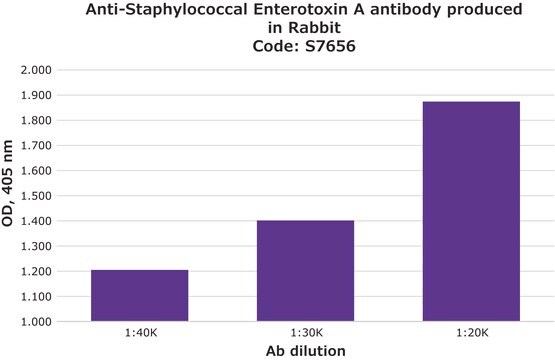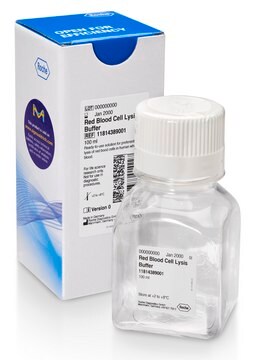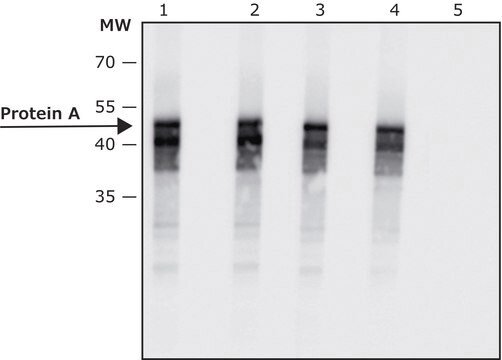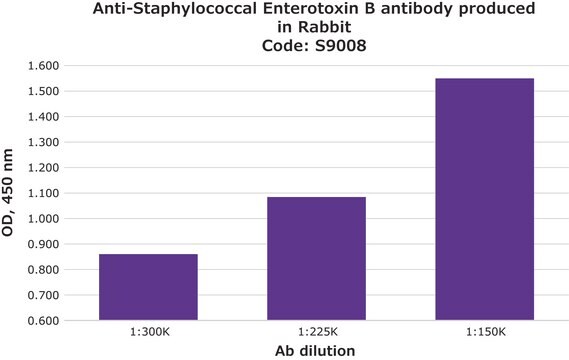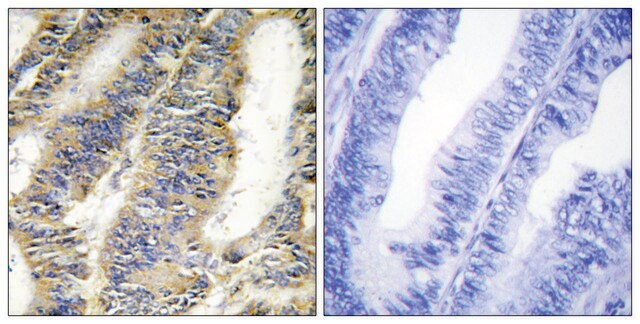SAB4200859
Anti-Staphylococcus Enterotoxin B antibody, Mouse monoclonal
clone SEB4, purified from hybridoma cell culture
Sinónimos:
Enterotoxin type B, SEB
About This Item
Productos recomendados
antibody form
purified from hybridoma cell culture
Quality Level
clone
SEB4
form
liquid
species reactivity
Staphylococcus aureus ((Staphylococcal enterotoxin B))
concentration
~1 mg/mL
technique(s)
ELISA: 0.12-0.25 μg/mL using 1 μg/ml staphylococcal enterotoxin B for coating.
immunoblotting: 0.5-1 μg/mL using staphylococcal enterotoxin B.
isotype
IgG1
UniProt accession no.
shipped in
dry ice
storage temp.
−20°C
target post-translational modification
unmodified
General description
Specificity
Application
Biochem/physiol Actions
Physical form
Storage and Stability
Disclaimer
Storage Class
12 - Non Combustible Liquids
wgk_germany
nwg
flash_point_f
Not applicable
flash_point_c
Not applicable
Elija entre una de las versiones más recientes:
Certificados de análisis (COA)
It looks like we've run into a problem, but you can still download Certificates of Analysis from our Documentos section.
Si necesita más asistencia, póngase en contacto con Atención al cliente
¿Ya tiene este producto?
Encuentre la documentación para los productos que ha comprado recientemente en la Biblioteca de documentos.
Global Trade Item Number
| Número de referencia del producto (SKU) | GTIN |
|---|---|
| SAB4200859-25UL | |
| SAB4200859-100UL |
Nuestro equipo de científicos tiene experiencia en todas las áreas de investigación: Ciencias de la vida, Ciencia de los materiales, Síntesis química, Cromatografía, Analítica y muchas otras.
Póngase en contacto con el Servicio técnico
